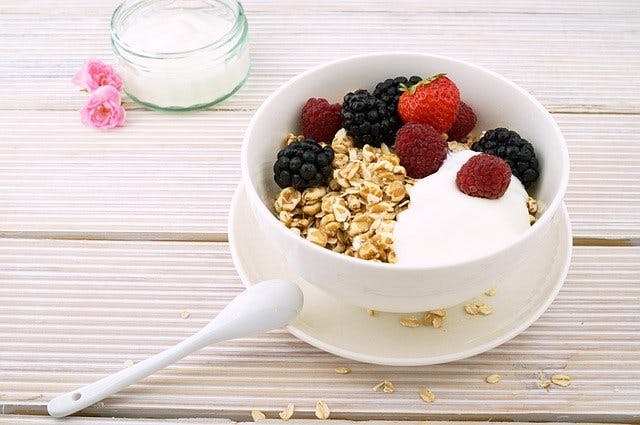
Pouch Reset Meal Plan
One of the most significant setbacks that bariatric surgery patients can face is weight regain after gastric bypass, or more commonly after a less invasive procedure like gastric sleeve or Lap-Band. Others become dissatisfied with their results, feeling they have not lost enough weight, so they consider revision surgery. However, some bariatric patients have successfully jumpstarted their weight loss through a gastric pouch reset diet. The gastric pouch reset diet is essentially a post-op psychological tool to help you get back on track to avoid additional weight loss surgery.
Can You Stretch Your Stomach after Gastric Bypass?
Weight loss surgery patients often want to know if you can stretch your stomach after gastric sleeve surgery as well. Medical experts are divided on whether this is an actual phenomenon as the stomach is a muscular organ that expands and contracts. A regular size stomach can stretch to hold more than four liters of food and returns to normal when food exits into the rest of the digestive system. Following surgery, your new stomach pouch continues its normal flow of expansion and contraction. Tissue within the stomach called rugae remain present in sufficient amounts to continue the process. When you overeat, even on a bariatric diet, the rugae stretch to accommodate the food you eat. When you overeat repeatedly, the sensation of fullness takes longer, and before you know it, you have lapsed back into unhealthy eating habits.
Does a Pouch Reset Work?
Just as when you first underwent bariatric surgery, a stomach reset may help you lose weight again. Whereas before, you couldn't eat because your stomach was swollen and healing, this time you'll contend with a healthy stomach is you'll need serious willpower and support from your doctor, family, and friends. The pouch reset plays into bariatric patients’ fears of putting on weight because they’ve ‘stretched’ their stomachs. It does not consider that the stomach has the natural capacity to stretch because it’s a muscle. After weight loss surgery, the stomach is restricted due to swelling and scarring. However, after healing, it will continue to work as a normal stomach by expanding and contracting. Thus, your capacity to eat more increases. The size of your pouch has less to do with whether or not you regain weight after your gastric sleeve surgery or gastric bypass surgery. What you eat and the amount of food you have is key to losing weight once again. A pouch reset is not a fix-all but a tool to restrict your caloric intake and return you to good habits. If you start to eat larger meals again, your stomach will respond to the increased volume. Before you embark on a gastric sleeve reset, you must be aware that there is no firm scientific evidence but only based on anecdotal evidence.

How to Tell if Your Pouch is Stretched
If you are unsure if you need gastric bypass pouch tightening, you can perform something referred to as the gastric bypass pouch reset test, also commonly referred to as the cottage cheese test. Scientific studies have not verified this procedure, so take it for what it's worth. Measure eight ounces of cottage cheese or mashed potatoes, and then eat until full. Subtract the remaining food to determine how much cottage cheese or mashed potatoes fit into your post. Eating five or more ounces of either food will indicate you do you know if you stretched your gastric sleeve.
How to Do a Pouch Reset
Essentially, a pouch reset mimics the post-bariatric surgery diet given to you by your surgeon and dietician. Contrary to popular opinion, a pouch diet will not "shrink" your stomach long-term. The point of the pouch reset diet is to restrict the types and amount of foods you eat to return to the mindset of healthy eating. Although it is similar to your original post-op eating plan, each phase is shorter as your stomach doesn't require healing. A pouch reset, usually done over 5 to 10 days, aims to recharge your body and mind and put the focus back on your successful weight loss post-bariatric surgery. Whether you choose a VSG pouch reset or a gastric bypass reset, the plan will begin with a liquid diet, followed by a pureed diet, and then back to solid foods.
What are the Goals of a Pouch Reset?
The pouch reset diet is essentially a test to demonstrate that you still have the will and commitment to follow a disciplined post-op diet and exercise plan. Once you succeed in this short-term pouch reset plan, you will regain the confidence to restore your mindset, behavior, and lifestyle for long-term weight loss. When undergoing a pouch reset, consider these goals when making your way back to eating solid foods and steadily losing weight:
- Allow your new small stomach pouch to return to a healthy, tight muscular position
- Break weight loss inertia or a weight loss plateau so you can get to back-on-track bariatric eating
- Restore your mental and emotional resolve and personal confidence toward a successful weight loss journey
Whether you are planning to undergo a VSG pouch reset or a gastric bypass pouch reset, you should know that these plans are not research-backed but only based on anecdotal evidence.
Pouch Reset Meal Plan
Most pouch reset meal programs are based on a rigorous 5-day or 10-day bariatric diet divided into three broad phases. Once again, you'll restrict yourself to liquid, pureed, and soft foods before finally transitioning back to solid food. The pouch created by your bariatric surgery won't necessarily shrink, but the pouch reset diet should leave you feeling fuller faster, just as your original bariatric diet did. Although you can figure out how to do a pouch reset on your own, you should do it under the guidance of a bariatric surgeon and dietician.
48-Hour Pouch Reset
The 48-hour pouch reset plan is essentially a ploy by online companies to get you to buy their bariatric food products, especially their protein shakes.
The first day consists of consuming only a protein shake for meals to flush your digestive system of sugars and simple carbohydrates.
The second day is merely a test to see if you can eat one cup of shredded chicken. The idea behind this 48-hour plan is to inspire confidence that you don't have to eat as much. For a more comprehensive diet to help you get back on track, try either the 5-day plan or the 10-day plan.
5-Day Pouch Reset Test
The five-day pouch reset test is the original system developed in 2007 by bariatric patient Kaye Bailey who struggled with weight regain following her bariatric surgery. The pouch reset menu varies slightly on whether you are doing a VSG pouch reset or a gastric bypass pouch reset. If you try the 5-day pouch reset, you can expect the following:
- Day 1: clear liquids like watch broth and sugar-free popsicles
- Day 2: full liquids only, including yogurt, protein shakes
- Day 3: pureed foods, including low-fat cottage cheese and scrambled eggs
- Day 4: soft foods, like soft cereals, steamed fish, soups, mashed fruits
- Day 5: healthy solid foods
10-Day Pouch Reset Meal Plan
The 10-day pouch reset is similar, with the stages approximately twice as long. You can expect to consume the following:
- Day 1: clear liquids only, sugar-free Jell-O, decaf coffee and tea, non-carbonated sugar-free drinks
- Day 2 and 3: full liquids, non-fat Greek yogurt, pudding, non-fat ice cream, soup with soft noodles, diluted applesauce, diluted no-sugar-added juice
- Day 4 to 6: pureed foods, hummus, soft cereals, scrambled eggs, any health foods you can puree, except meat
- Day 7 to 9: soft foods, like soft cereals, soups, mashed fruits and vegetables, soft fish, canned tuna or salmon, ground beef or chicken
- Day 10 and Beyond: Introduce other healthy solid foods slowly and in small portions with meals no bigger than the size of your fist.
Back-on-Track Bariatric Eating
Typically, any pouch reset diet will focus primarily on protein, with added healthy vegetables and fruits. When attempting a pouch reset, you should focus on the guidance you received from your bariatric surgeon and dietitian. This advice includes:
- Drinking liquids at least 30 minutes before and after eating
- Eating slowly and chewing well at each meal
- Little or no caffeine
- Drinking at least 64 ounces of water per day
- No snacks
- Consuming protein shakes with 15 grams or more of protein with less than 5 grams of sugar
We hope that you have found the above information on the pouch reset and diet and meal plan useful.
Track what you eat daily. Remember, the goal is not to drink or eat anything in amounts that will stretch your stomach. If you want to know more about the pouch reset, call us today at 1 800 970 0577 or use our contact form so that you can enjoy a free virtual consultation.

